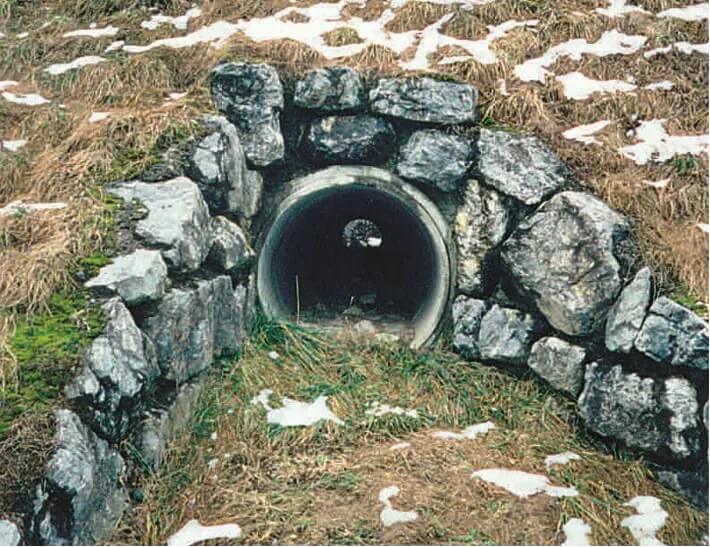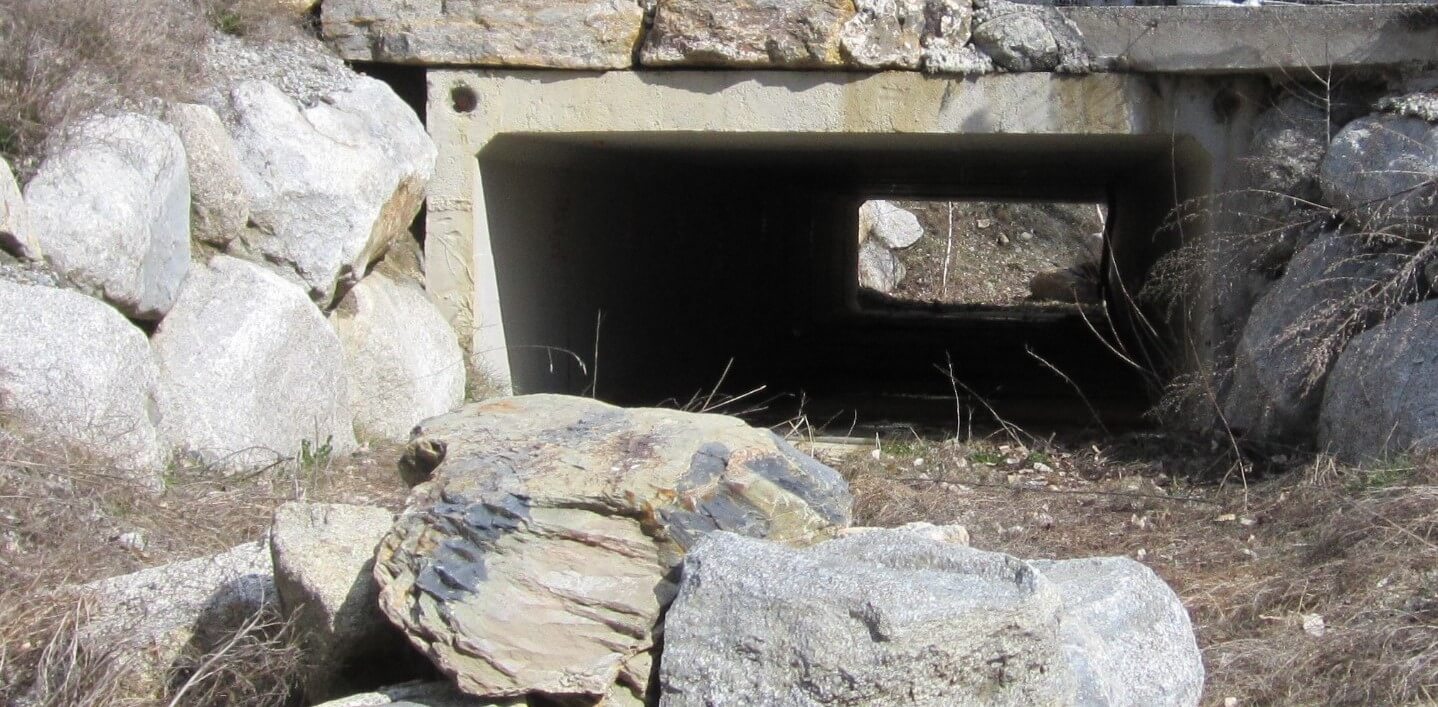General description and targets
Underpasses for small fauna consist of pipes or rectangular structures which are built specifically for some target species. They often target small carnivores (e.g. fox, badger, otter, polecat), but are used by many other small mammals, reptiles, amphibians and invertebrates that can cope with the specific cave-like conditions (Figure 5.5.38). There is also a potential to combine fauna use with drainage which is described in Section 5.5.10 – Adapted culverts.
Provision of small fauna underpasses should be considered in sections where there are no culverts that could be adapted for wildlife use to increase the permeability of the infrastructure to small animals. Specific small fauna passages may be needed where animals regularly cross infrastructure and high mortality is registered. This is the case particularly for species such as badgers or otters that move along clearly defined paths.
Location
- Underpasses for small animals are appropriate where a road or railway line across a natural area is built on an embankment (Figure 5.5.39).
- They are particularly necessary in areas where hotspots of small fauna mortality are registered or there is a need to provide safe passages for small fauna movements, particularly threatened species.
- If the target species use clearly defined paths, the underpass should be placed as closely as possible to the site where the path crosses the infrastructure.
Dimensions
- The recommended minimum dimensions for small fauna underpasses in European standards ranges from 1 to 2 m width; 1 to 2 m height, or in the case of a pipe from 0.5 to 2 m diameter (Table 5.3).
- To allow appropriate maintenance of a culvert using machinery, a width and height of 2 m is recommended. Nevertheless, narrower structures could be used for a variety of species. Even a width of 0.3-0.5 m may be acceptable to badgers and otters, but such small passages are not suitable for a passage aimed also at other species.
- The diameter of a pipe has to be large enough to allow the bottom part to be filled in to provide a flat surface for animals to walk on.
Design
- Rectangular structures are preferable for amphibians, and possibly other species, because the vertical walls provide better guidance and a larger floor space. Such a shape profile is the preferred installation on new transport infrastructure.
- Pipes are often cheaper than rectangular constructions and are easier to install under existing roads. The base of the pipe should be filled to provide a flat surface to walk on.
- Corrugated steel is not recommended. Metal surfaces deter some species, e.g. rabbits and some carnivores.
- Design solutions should be adopted that prevent the passage from becoming waterlogged. To allow a free-draining tunnel, the minimum gradient is 1%. The maximum gradient should be 1:2. Internal surfaces where there is a gradient should be rough.
- The bottom of the structure should at all times be above the level of the ground water.
- The floor should be as natural as possible with sand, stones and rocks when possible. Tarmac or other non-natural materials are not as suitable.
- Underpass entrances should be kept free from human disturbance. Artificial light should be avoided.
- Entrances should be located in recesses along the fence line so that animals are guided to them. They also must be set up as high as possible in the embankment to shorten the length of the crossing but at the same time avoiding steep gradients.
- Entrances have to be placed outside any fences which run alongside the transport infrastructure.
Points for special attention
- Shelter and guidance for small animals (mice, invertebrates) could be provided with two strips of tree stumps, stones or other material.
- The underpass should be accessible for inspection.
- Access for animals has to be unobstructed.
- No roads or tracks that interrupt the habitat connectivity adjacent to the underpass should be built parallel to the infrastructure being crossed.
- The vegetation around the tunnel entrance needs to be appropriately maintained.

